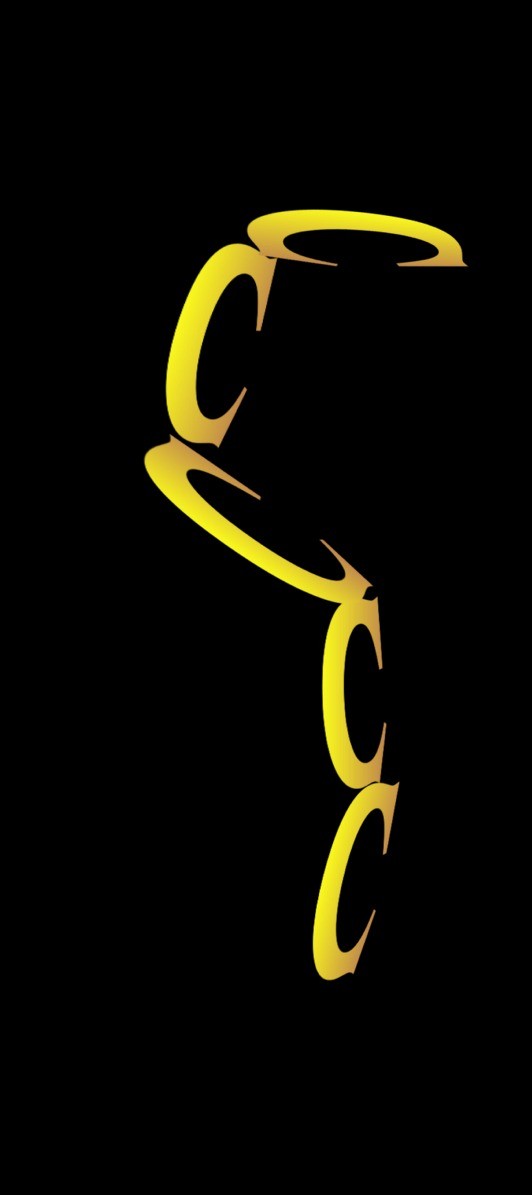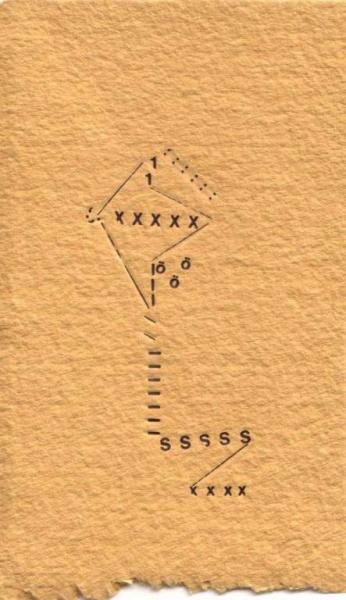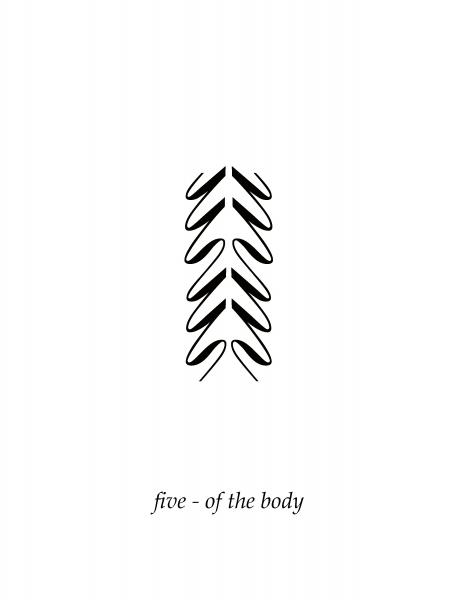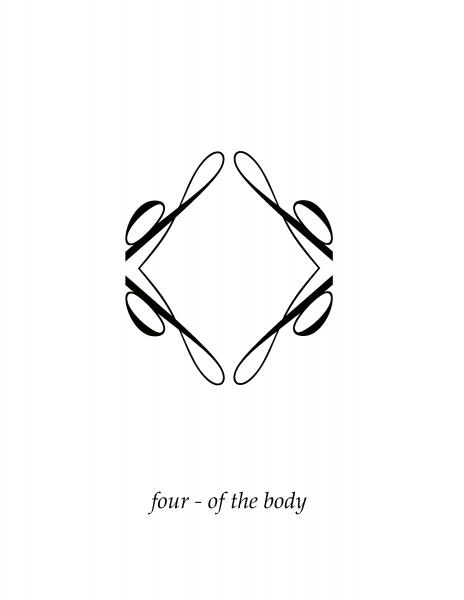
What kind of [sic] sense is that?
Amanda Earl & the synaesthesia of reading

Much of Ottawa poet Amanda Earl’s work is grounded in the sensory. The transensory. Color. Shape. Body. Touch. Looking. An A is a blue. Monday is cerise.
She writes: “I have grapheme synaesthesia, which in my case means that the alphabet, numbers, months, days & some names evoke colour for me.”
C-Horse: the rich modulation of colour. From sunflower yellow to saffron and amber.
The luminous obliquely observed Cs within a rich field of blackness, what might be called an inky black. The C-creature(s) suspended in dark water. The fin-thin edges of the serifs reaching into the darkness. We respond to the blackness tactilely. Our reading reaches in and feels it. We could swim into this dark page.
Amanda calls the work ‘C-horse’. But this delicate creature could be a bioluminescent deep-sea frond or tentacle. A fragile balancing of Cs. The image captured as it pulsed with inner radiance.
We read the negative space, also. The dark sea enclosed in the curves of the creature, gathering in the Cs. There seems a current moving through the blackness, a rippling.
And the C-horse itself seems full of delicate movement. Tilting its body. Curling. The Cs carefully balancing on each other, not quite sustaining their aquabatics. Their alphabatics.
I wonder what Gutenberg or the Rosetta Stone scribe would think of the vivid 3-dimensionality of these golden Cs with their rounded backs turned toward the 4th wall of the reader?
Johannes: There’s a source of light. Is it our reading?
*
Unless we are reading braille, we read with our eyes.
And sometimes, as Dylan Thomas writes, “with [our] eyes hanging out.”
Is reading different than listening?
But even ocular reading speaks to senses beyond the visual. And by this I don’t mean how our eyes transform written language into verbal sound (viz. bpNichol’s “Speech: each to eech.”)
I’m referring to the synaesthetic. How we read taste, movement, weight, and rhythm.
Perhaps it’s a kind of echolocution. What kind of [sic] sense is that?
We send out our eyes and they send back this C. We see C; we hear sea. From see to shining sea. We're seized by the particular heft of these Cs, a sweet sensation, a tingling in the fingers, the tongue-tip. Maybe, a kind of movement. A C-thing. A see-thing. A seething in our aqueous humor.
The C to see what we can C. This particular C. It’s not a shadow on Plato’s C, it is its own C, enclosing, grasping around, defining C space. We C and we here. Not cant or Kant’s c-thing per se (das Cing an sich) but the phenomenal. The noun-menon. Perceptual writing.
Amanda Earl: "C-Horse" is part of " the alphaquatic series" I did for Jenny Sampirisi's Other Cl/utter blog in 2007, fairly early on in my explorations of visual poetry. I was responding to the work on the blog & also to the aesthetic of the blog which was to examine text as visual space & to view language & its component parts as visual art. I have grapheme synaesthesia, which in my case means that the alphabet, numbers, months, days & some names evoke colour for me.
One of the aspects of visual poetry, I enjoy is its capacity for whimsy & play. Here I guess I'm playing around with puns (C/sea horse) & shapes & colours.
When I'm working on a visual piece…I pay no attention to any kind of rule or perceived rule. I go my own way. There's something satisfying about playing in the margins. Since this was 6 years ago, I'm not even sure what I was influenced by back then as far as other visual & concrete poetry. I was starting to explore derek beaulieu's work, had seen some bpNichol & also the amazing stuff that Dan Waber was doing, including a site he set up for other visual poets to upload our work to. I can't remember when I started to check out your visual poetry, but I've always appreciated what seems to me [your interest in] imagination & play.

GB: In the untitled piece (pictured above), I love the palpable tactility of the paper. The terrain of the page, its bumpiness and irregularity. The torn edge and the little shadows cast on the white surface below. I particularly like how one can see the impressions made on the page through the physical process of transferring the Letraset – the rubbing causes depressions in the soft surface of the page. A mark left by marking. A paean to the page and the (invisible) pen.
The sensory, tactile, synaesthetic aspect of your work intrigues me, but I'm also interested in your 'subject position' particularly with regards to the many things you've written about about erotica, and, more generally, about your keen relation with the sensory and the body.
AE: Thanks kindly. I like the idea of an erotics of vispo, but I do a lot of different things. I hadn't really seen the visual poetry connected with my erotica in any way other than I guess I do experience everything very physically, very sensually, including text & art & colour & sound & all the other senses. Since my health crisis in 2009, I've become obsessed with the body. As part of the health crisis, I had my colon removed. I now have an eight-inch long scar along my stomach & an oval scar from the small bowel reattachment surgery in 2011. I had a long recuperation period in which to heal. To experience my body as it changed from something that was fairly pristine to something damaged & resilient, to a kind of miracle thing that can exist without a colon. That obsession for the body worked its way into my Puddles of Sky Press chapbook, "Of the Body" published by Michael Casteels last year.

GB: The images in that book evoke the body in an abstract way. In "five - of the body," the looping thick-thin stacks of letterforms seem organic. Perhaps spinal, perhaps some kind of organ. Or maybe, one could imagine the image to be a microorganism, or several: the curving letter-parts flagella or cilia.

In "four - of the body," the calligraphic d’s, p’s, b’s, or g’s also seem organic. Perhaps this is a cross section of a spine. Perhaps we are formed by letters. Certainly we have veins, and nerves, bronchi and neurons that write on the body—that are the body—that loop and branch, a writing of letterforms on the text of ourselves.) Surprisingly little visual poetry uses 'cursive' fonts. In this context, these fonts seem particularly 'of the body', visual records of the motions of the writing hand.
I wonder how you might conceive of how one reads with not just the eyes, but with all of the other senses? And how writing for one sense may be read by another?
AE: This is something that always frustrates me with the way some people read poetry looking for surface meaning. I've never given a rat's ass about that. I'm always looking for a combination of senses & emotions to be evoked by whatever I'm creating or absorbing as a reader, viewer, listener, etc. When I work on visual poems, I'll often play music & let the various combinations of notes, instruments, melodies, etc. help me to create the piece. To me the beauty & excitement of visual poetry is that it isn't hemmed in by expectations of a specific form in the way that other linear forms of poetry are.
How viewers choose to interpret or read the visual poem is really up to them rather than prescribed by some external authority. I always hope that whatever I do will inspire someone else to create something in that form or another form. I believe in sharing what one produces in order that others can derive inspiration from it.
Amanda Earl's visual poetry chapbooks are "Montparnasse (Dan Waber's "This is Visual Poetry" series); "a field guide to fanciful bugs" (avantacular press); "Of the Body" (Puddle of Sky Press). Amanda's visual poetry also appears in the Last Vispo Anthology (Fantagraphics) & online in the DrunkenBoat.com Visual Poetry issue, UnlikelyStories.org, bill dimichele's Tip of the Knife blog & in other places. Amanda is the fallen angel of AngelHousePress which publishes visual poetry via NationalPoetryMonth.ca and Experiment-O.com.